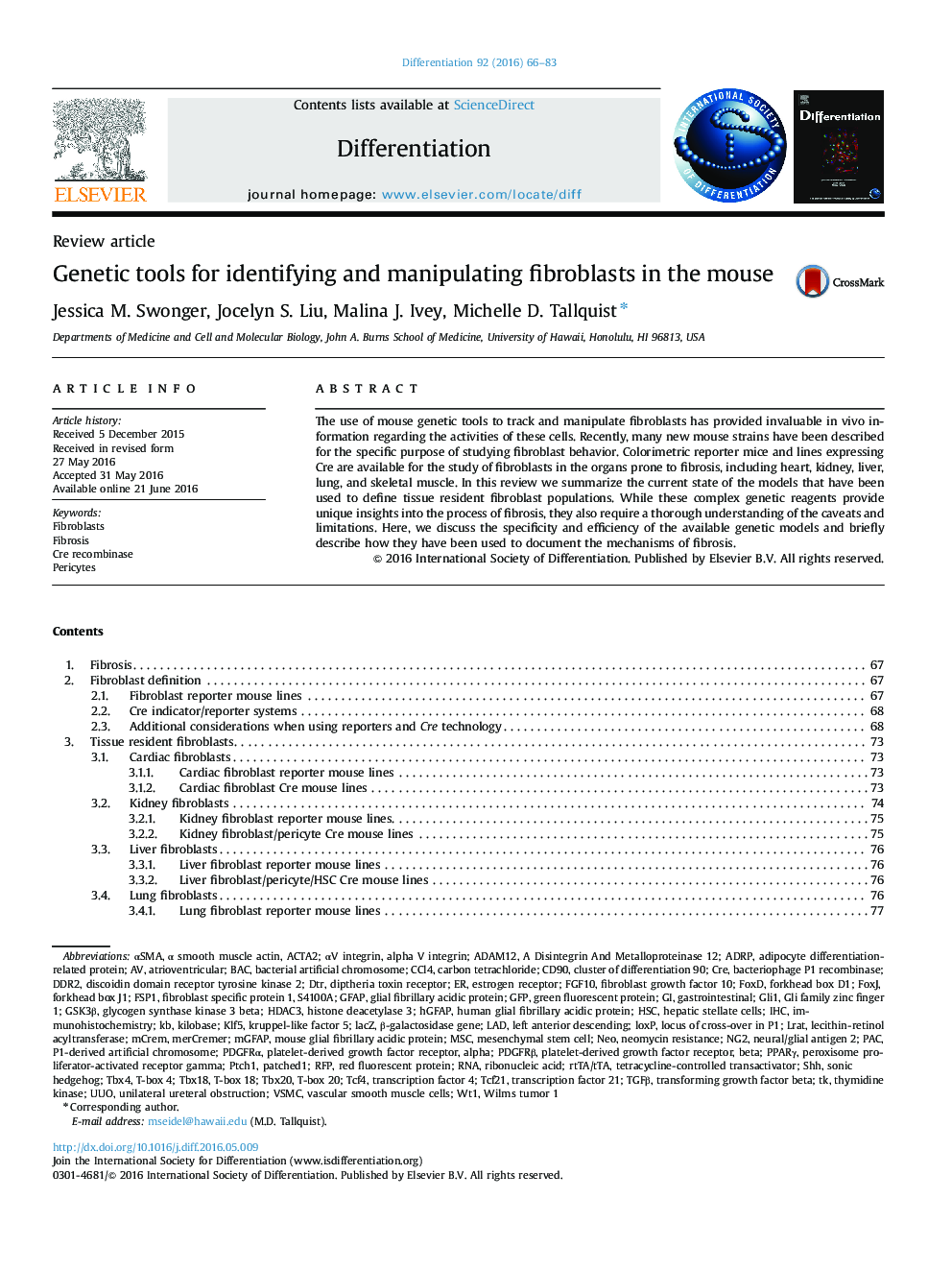| Article ID | Journal | Published Year | Pages | File Type |
|---|---|---|---|---|
| 5526095 | Differentiation | 2016 | 18 Pages |
The use of mouse genetic tools to track and manipulate fibroblasts has provided invaluable in vivo information regarding the activities of these cells. Recently, many new mouse strains have been described for the specific purpose of studying fibroblast behavior. Colorimetric reporter mice and lines expressing Cre are available for the study of fibroblasts in the organs prone to fibrosis, including heart, kidney, liver, lung, and skeletal muscle. In this review we summarize the current state of the models that have been used to define tissue resident fibroblast populations. While these complex genetic reagents provide unique insights into the process of fibrosis, they also require a thorough understanding of the caveats and limitations. Here, we discuss the specificity and efficiency of the available genetic models and briefly describe how they have been used to document the mechanisms of fibrosis.
